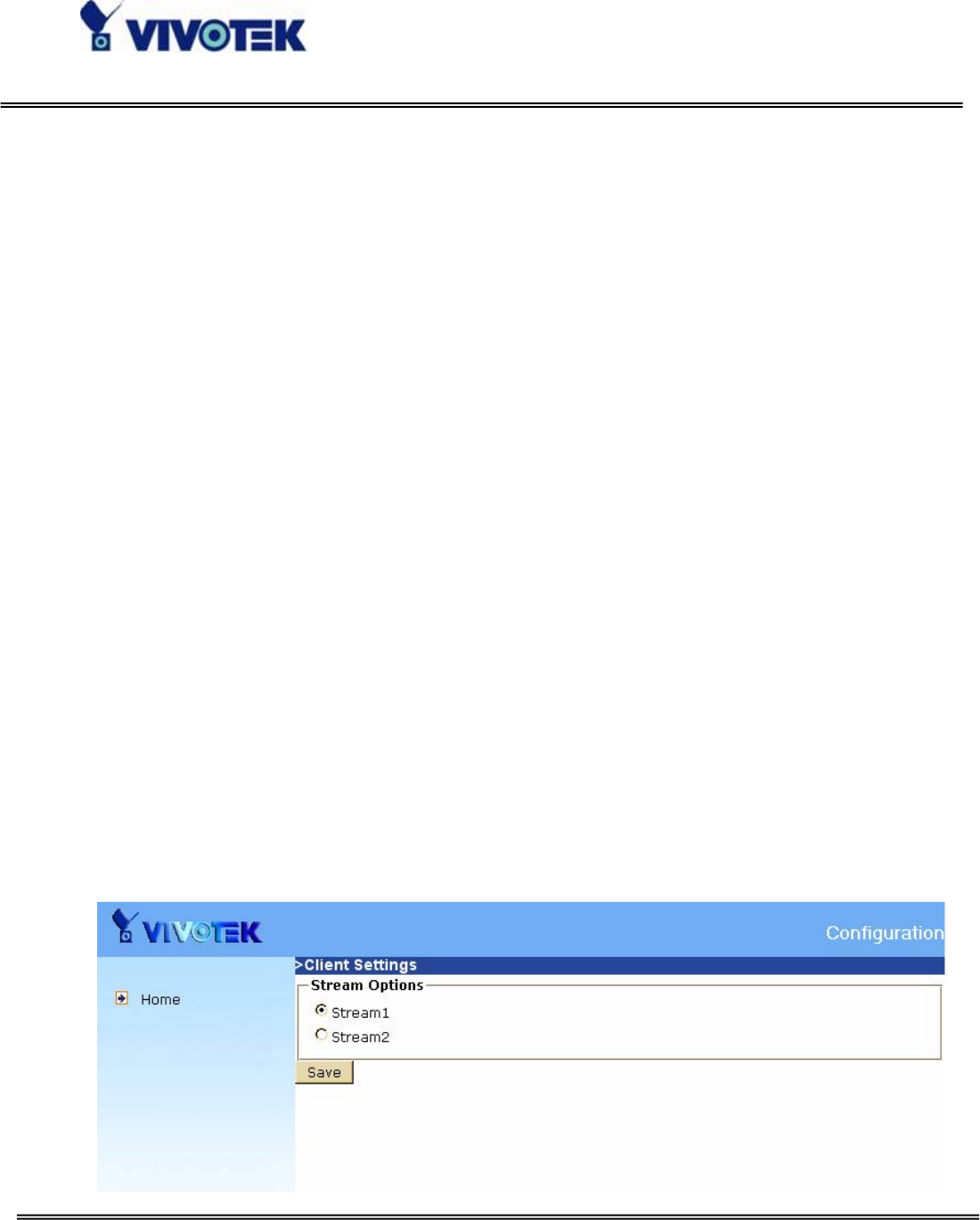
- 19 -
www.vivotek.com
Options”. for users to determine which media to be streaming under MPEG-4 mode.
The third one is “MPEG-4 Protocol Options” which allows choices on connection
protocol between client and server. There are four protocols choices to optimize your
usage – UDP unicast, UDP multicast, TCP and HTTP.
The UDP unicast protocol allows for more real-time audio and video streams. However,
some packets may be lost due to network burst traffic and images may be obscured.
The UDP multicast protocol allows to save the bandwidth of server while serving
multiple clients at the same time.
The TCP protocol allows for less packet loss and produces a more accurate video
display. The downside with this protocol is that the real-time effect is worse than that
with the UDP protocol.
The HTTP protocol allows the same quality as TCP protocol and the user don’t need to
open specific port to streaming under some network environment.
If no special need is required, UDP unicast protocol is recommended. Generally
speaking, the client’s choice will be in the order of UDP multicast → UDP unicast →
TCP → HTTP. After the Network Camera is connected successfully, “Protocol Option”
will indicate the selected protocol. The selected protocol will be recorded in the user's
PC and will be used for the next connection. If the network environment is changed, or
the user wants to let the web browser to detect again, manually select the UDP protocol,
save, and return HOME to re-connect.
The fourth one is “Save Options”. User can specify the recording folder, file name
prefix and suffix here.
There is only one setting “Stream Options” for the client side in Firefox. User can
choose to view stream1 and stream2.


















